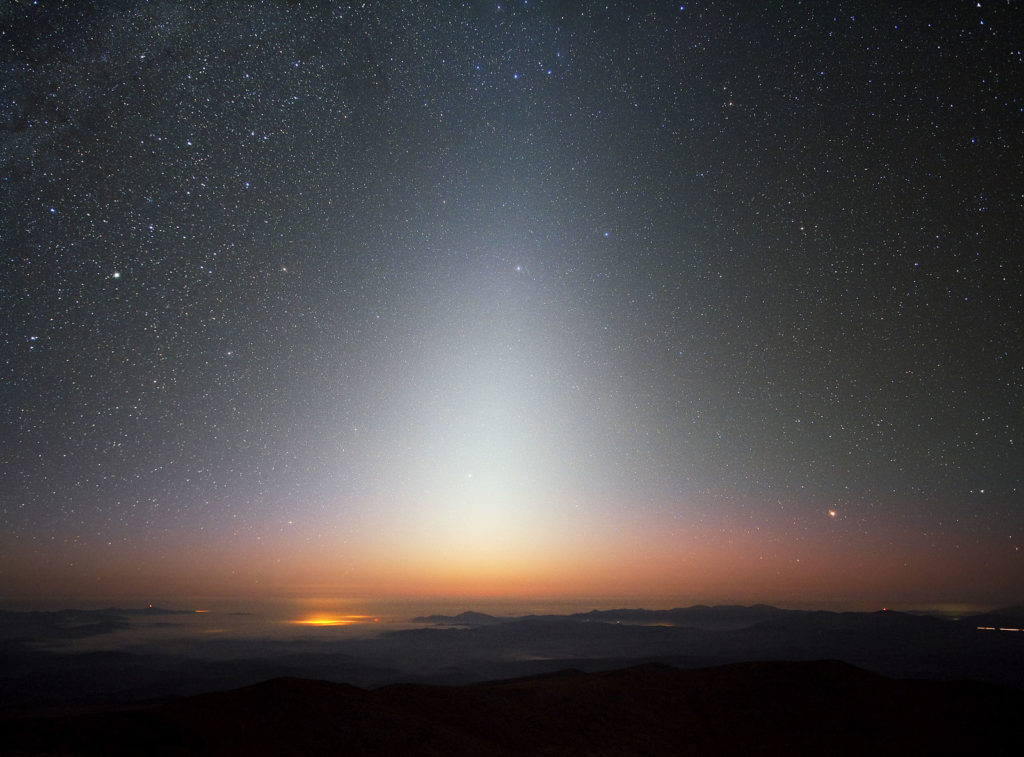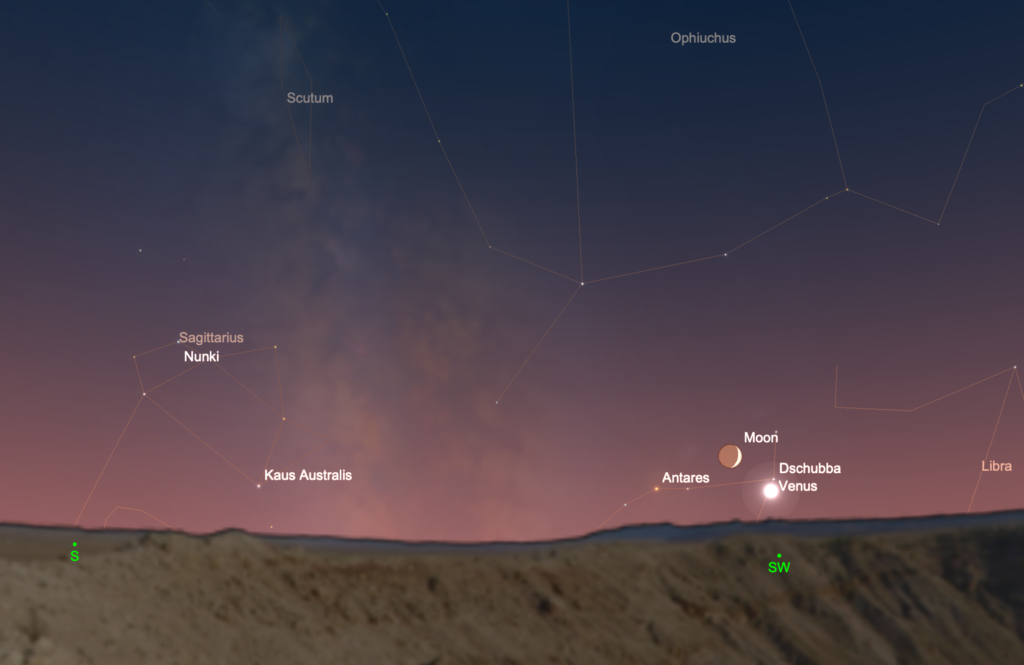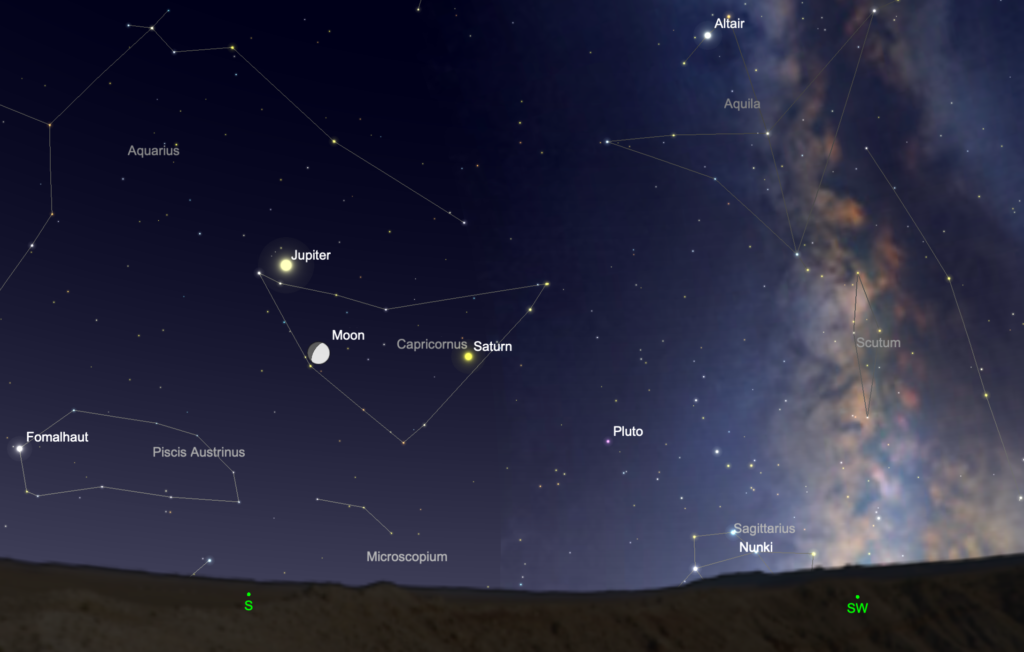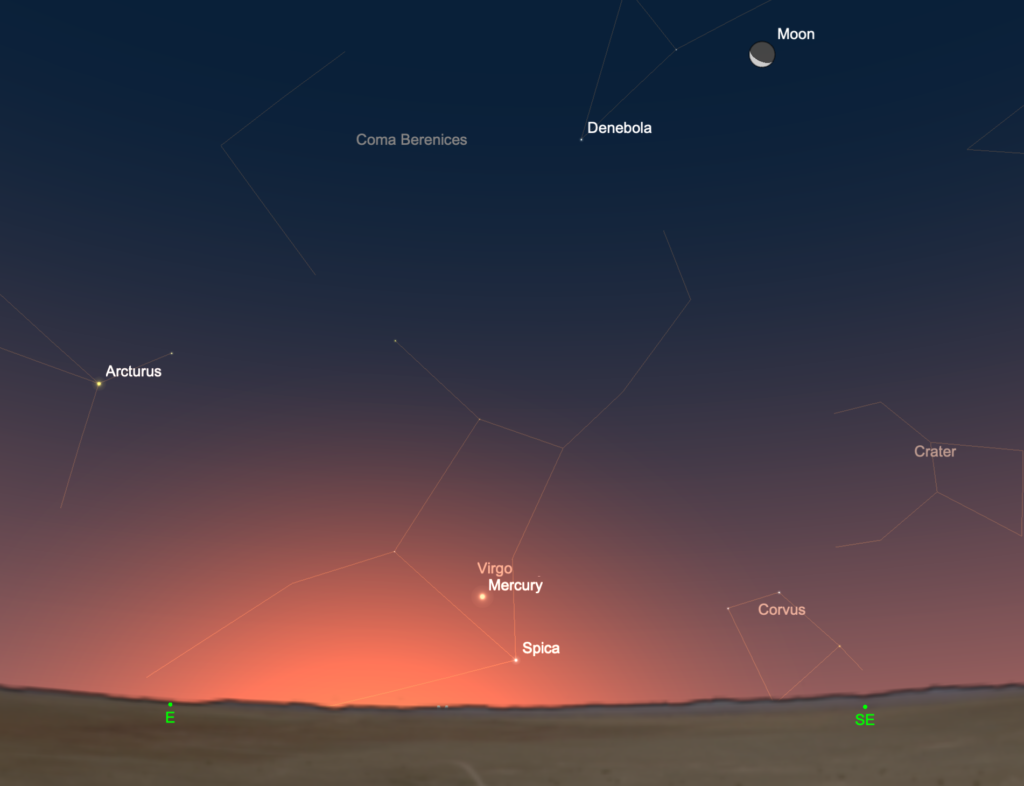
If the weather holds, October is a lovely month for stargazing. The Milky Way still lingers in the west along with stars that were prominent in the northern summer. The autumn stars dominate overhead, and the northern winter stars are starting to poke above the eastern horizon. Best of all, you can get in a good night of stargazing without staying up too late. Jupiter and Saturn remain in Aquarius and Capricornus, respectively, both still big enough for promising telescopic observation. Mars finally rounds the Sun and remains out of sight for the next several weeks. Venus and Mercury make an appearance. The Orionid meteor shower arrives, although under moony conditions, and the zodiacal light emerges for those with dark sky. Here’s what to see in the night sky this month…
3 Oct. Look for the waning crescent Moon rising with the first-magnitude star Regulus in the eastern sky before dawn.
4 Oct. Over the next couple of weeks, northern-hemisphere observers who have very dark sky can see the zodiacal light in the eastern sky about 90-120 minutes before sunrise in the northern hemisphere. This whitish glowing wedge of light appears to thrust upward from the horizon (see image above). The zodiacal light, sometimes called the “False Dawn”, is simply sunlight reflected off tiny dust particles in the inner solar system.
6 Oct. New Moon, 11:05 UT
8 Oct. The Draconid meteor shower peaks over the next few days. This meteor shower occurs each year when the Earth passes through a stream of debris left from periodic Comet Giacobini-Zinner. While it’s usually a spartan meteor shower, with just a handful of meteors visible each hour, the Draconids have flared up from time to time. In 1933 and 1946, observers reported thousands of meteors per hour, so this modest shower became a meteor storm. There was also a good show in 1988. There’s no word of a flare up this year, but if you’re out stargazing, take a look. You never know.
8 Oct. Mars, after putting on a lovely show for the past 18 months, reaches conjunction with the Sun today. It will now slowly emerge in the morning sky over the coming weeks.

9 Oct. Look for a waxing crescent Moon just above brilliant Venus with the bright red-orange star Antares to the left. The pair all lie within about seven degrees of each other over the southwestern horizon in the evening as darkness falls. Venus is well separated from the sun all month and reaches greatest eastern elongation on October 29. But it lies far south on the ecliptic and remains an easier sight for southern-hemisphere stargazers.

13-14 Oct. Saturn resumed its prograde motion on Oct. 11 and moves eastward again against the background stars from night to night. On the 13th and 14th, the planet lies just 4o from the first-quarter Moon in the constellation Capricornus.
13 Oct. First Quarter Moon, 03:25 UT
15 Oct. Like Saturn, Jupiter also resumes its prograde motion this month on the 18th in Aquarius. Tonight, the waxing gibbous Moon lies about 4° away from the big planet. It remains bright, at magnitude -2.6, and splendid in a telescope.
20 Oct. Full Moon, 14:57 UT
21 Oct. The Orionid meteor shower peaks in the early morning hours. One of the finest of all meteor showers, the Orionids display about 20-40 fast-moving meteors per hour in dark sky. The radiant lies near the club of Orion, but meteors will be visible anywhere in the sky with the peak likely occurring between midnight and dawn. Like the Eta Aquariid meteor shower in May, the Orionids are tiny pieces of Comet Halley that hit the upper atmosphere as the Earth passes through the comet’s debris field. The moon, just past full, alas, gets in the way of the faintest meteors this year.
28 Oct. Last Quarter Moon, 20:05 UT
29 Oct. Venus reaches greatest eastern elongation about 47o from the Sun. Southern hemisphere observers see the planet high and bright in the western sky after sunset. Northern observers, because of the angle of the ecliptic, need to work a little harder to see the planet over the southwestern horizon as darkness falls.

31 Oct. Mercury reached greatest western elongation about 18o from the Sun on the 25th. Today it rises in the eastern sky before dawn with the brilliant white star Spica in the constellation Virgo. The planet is best positioned for northern observers at this apparition, but southern observers with a clear view down to the eastern horizon can also spot the pair.